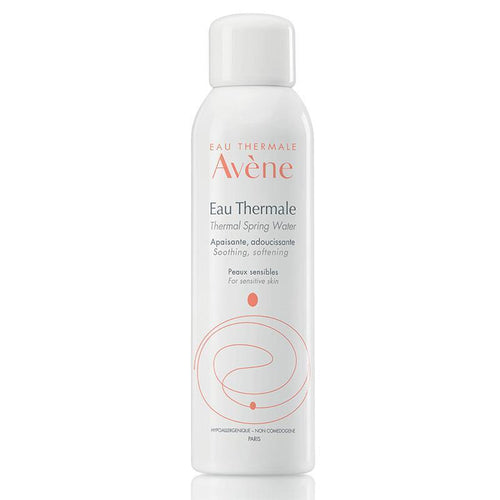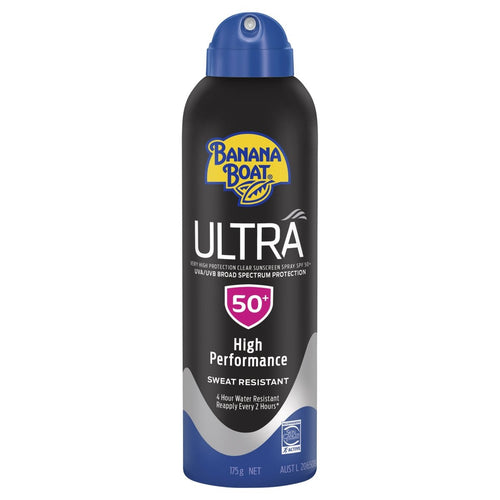Spent too much time in the sun? Heat exhaustion and heat stroke are most common during summer, so it’s important to know the risks, how to prevent it, and how to spot the warning signs.
As we welcome summer’s warmer weather, many of us will be spending more time outdoors soaking up the rays. We all know the Aussie sunshine can be a cruel mistress if you’re not careful, so during the summer it’s important to know your limits when it comes to staying out in the sun.
UV rays don’t just damage your skin, the hot weather can also cause your body to overheat, and if you become so dehydrated you can’t cool down, it can be life-threatening.
You’ve probably heard of heat stroke or sun stroke — heat stroke is a serious heat injury that requires urgent medical attention. But before heat stroke comes heat exhaustion, which although isn’t quite as serious, it’s your warning sign that heat stroke could be on its way. So you’ll need to act fast.
Here’s how to tell difference between the two and how to recognise the warning signs.
What is heat exhaustion?
Heat exhaustion is when your body temperature gets too hot. If your body temperature rises above 37°C (or 98.6°F), you’re at risk of developing a heat-related illness. If you don’t treat heat exhaustion, it can lead to heat stroke. This is when your internal temperature reaches at least 104°F.
Heat stroke is much more serious than heat exhaustion — heat stroke can cause shock, organ failure, or brain damage. In extreme cases, heat stroke can result in death. Heat exhaustion is your warning sign to cool your body down immediately.
What causes heat exhaustion?
In very hot weather, the body has to work hard and produce a lot of sweat to keep itself cool. The evaporation of your sweat regulates your body temperature. But sometimes sweating isn’t enough to cool down, so a person’s body temperature can rise rapidly — a normal core body temperature is 37°C (or 98.6°F). This is more likely to happen when it’s humid and if the temperature is high — particularly when combined with strenuous physical activity —or if you’re dehydrated and cannot produce enough sweat.
With heat exhaustion, your body is unable to cool itself down, so your body temperature rises above the normal core temperature that’s considered healthy. As a result, you may experience heat cramps or muscle weakness, which can include muscle cramps, heavy sweating, fatigue and extreme thirst.
Some people are more at risk of heat exhaustion than others. These include:
- elderly people (over 65)
- young children under 4 — they produce more body heat and sweat less, so are more at risk of rapid rises in body temperature
- people taking certain medications — some medications can affect the body’s ability to stay hydrated and regulate heat, these include blood pressure medications, antihistamines, tranquillisers and antipsychotics
- people who are obese
- people with chronic diseases
- people working or exercising in a hot environment
- heat waves — three or four days of high maximum temperatures that are unusual for the location or time of year
Other things that can also cause heat exhaustion include dehydration, drinking alcohol and overdressing, particularly in clothes that don't allow sweat to evaporate easily.
What are the symptoms of heat exhaustion?
Heat exhaustion symptoms can develop suddenly or over time, particularly with extreme and prolonged exercise. The symptoms and warning signs to look out for include:
- headaches
- dizziness
- excessive sweating
- cool, clammy, pale skin with goose bumps when in the heat
- feeling faint
- fast breathing
- a weak yet rapid pulse or heart rate
- cramps in the arms, legs and stomach
- nausea and loss of appetite
- low blood pressure when standing
- high temperature of 38C or above
- feeling thirsty
Symptoms are usually similar in both adults and children, although with children they might become floppy and sleepy.
How do you treat heat exhaustion?
First and foremost, if someone is displaying symptoms of heat exhaustion, you need to cool them down. Here are some simple steps to follow to help someone cool down from heat exhaustion.
- Move them into a cool place and get them to lie down and raise their feet slightly.
- Make them drink plenty of water or sports rehydration drinks.
- Remove any excess clothing.
- Use cool packs or use a cold damp cloth or sponge and apply to the skin. You can also place cool packs under the armpits, groin or neck, and if you have a fan, position it towards them.
- Get them to have a cold bath or shower.
- Stay with them until they're better.
They should start to cool down and feel better within 30 minutes, but if symptoms worsen or if there is no improvement, seek urgent medical attention or call an ambulance.
What is heat stroke?
Heat stroke occurs when the body temperature rises above 40°C, or 104°F. It’s a life-threatening condition where the body overheats and is unable to cool down or maintain a healthy temperature. Heat stroke requires urgent medical attention to lower the temperature as quickly as possible. If you’re unable to cool down, this can risk permanent damage to your brain and other vital organs that can result in death.
Whilst heat stroke is extremely dangerous, the good news is it’s preventable providing you take precautions in extremely hot weather.
What causes heat stroke?
Heat stroke is caused by your body overheating (when your body temperature rises above 40°C, or 104°F) from prolonged exposure to heat. It’s the most serious form of heat injury, and is usually the result of prolonged exposure to high temperatures or exercising in extreme heat. It’s most common during the summer months.
You can get heat stroke inside or outside, and when you exercise in hot weather.
You’re more likely to get heat stroke if you are:
- over 75 or very young
- pregnant or breastfeeding
- overweight
- working or exercising in hot conditions
- affected by chronic diseases such as heart disease and diabetes
- taking certain medications
What are the symptoms of heat stroke?
The first sign to look out for is a high temperature — if a person’s body temperature rises to more than 40°C either from the heat or as a result of strenuous exercise, there is risk of developing heat stroke. Other signs to recognise include:
- headache, dizziness, nausea, vomiting and confusion
- flushed, hot and unusually dry skin
- being extremely thirsty
- having a dry, swollen tongue
- sudden rise in body temperature to more than 40°C
- disoriented or delirious
- slurred speech
- being aggressive or behaving strangely
- convulsions, seizures or coma
- sweating yet cool skin
- rapid pulse
How do you treat heat stroke?
Heat stroke is a medical emergency. If someone has heat stroke you’ll need to call triple zero (000) immediately and ask for an ambulance.
Until the ambulance arrives you should give the person sips of cool water to rehydrate, and lay them down in a cool, shady place. Don’t give sugary, caffeinated or alcoholic beverages to a person with heat stroke. Also avoid very cold drinks, as these can cause stomach cramps.
You can also try to lower their body temperature by:
- removing excess clothing
- sponging or spraying them with water and fanning the damp skin
- immersing them in cool water
- placing cold packs under their armpits or groin, or on the back of their neck
If a person with suspected heat stroke is unconscious, place them on their side with their mouth down (to drain any fluid) and the chin up to prevent possible suffocation.
Do not give aspirin or paracetamol to someone with heat stroke, this may make things worse.
How do you prevent heat exhaustion and heat stroke?
Heat exhaustion and heat stroke are most common during summer when the weather is warmer. The hot temperatures paired with excessive exercise are key culprits — these conditions can cause people to become extremely dehydrated.
But the good news is there are some simple tips to avoid heat exhaustion and heat stroke from developing when the temperatures start to soar:
- drink plenty of cold drinks, especially when exercising, and avoid hot or sugary drinks
- take cool baths or showers, or sprinkle water over skin or clothes
- keep cool – try to avoid direct sun, and if you are in the sun wear a hat and apply SPF30 sunscreen
- keep your house cool – close windows, shut curtains and blinds, and use air-conditioning if you have it
- wear lightweight, loose-fitting clothing
- avoid peak temperatures — stay out of the sun between 11am and 3pm
- avoid extreme exercise in peak temperatures
- avoid excess alcohol
Be wary of young children and the elderly with long-term health conditions (like diabetes or heart problems), as they’re more at risk of heat exhaustion or heat stroke.
Never leave babies, children or animals alone in a car.
Loved our advice on heat stroke and heat exhaustion? We've got plenty more helpful tips and expert health advice to check out on our Health & Wellness Edit. Can supplements really boost your immune system? Are you suffering from depression or could you have vitamin D deficiency?
















 // Dotdigital pop up code //
// Dotdigital pop up code //